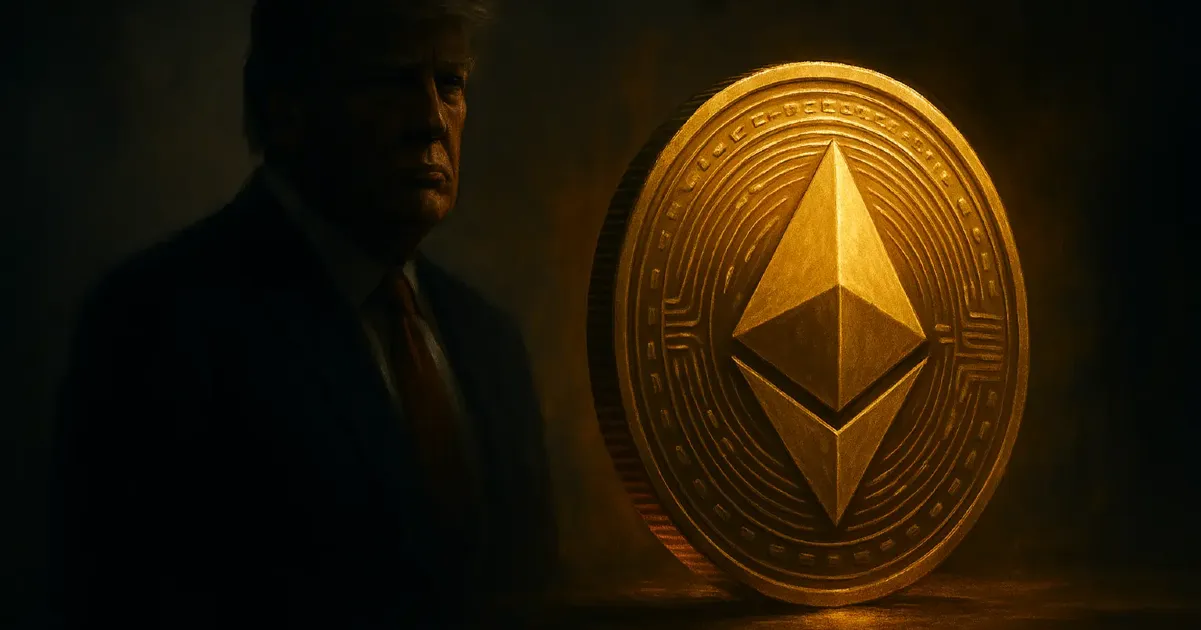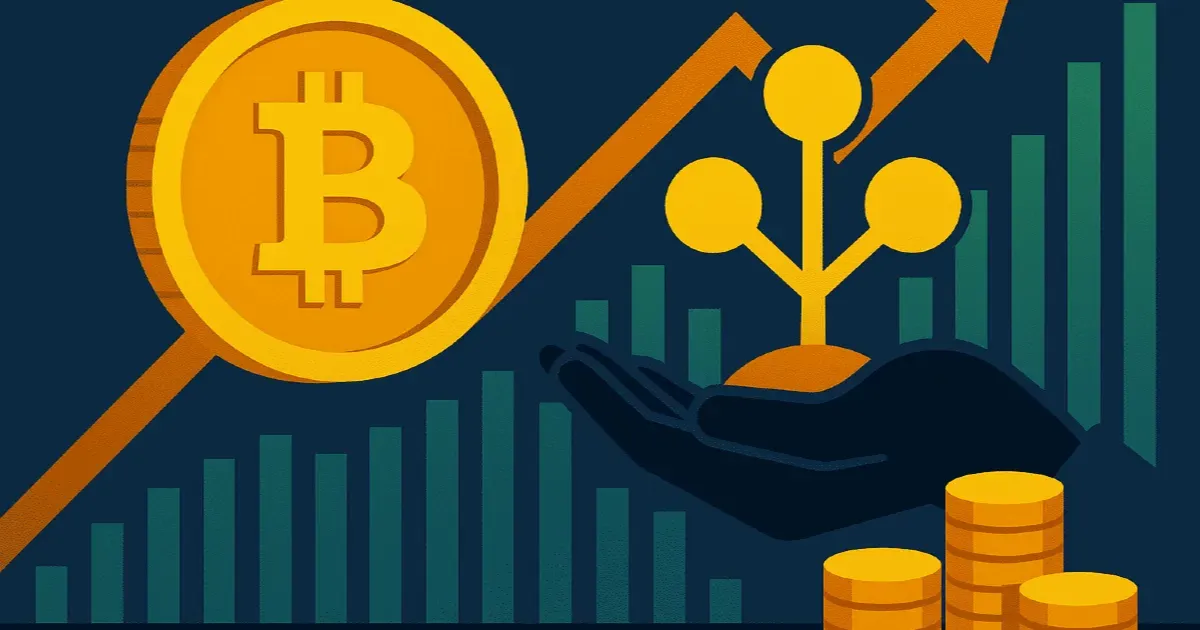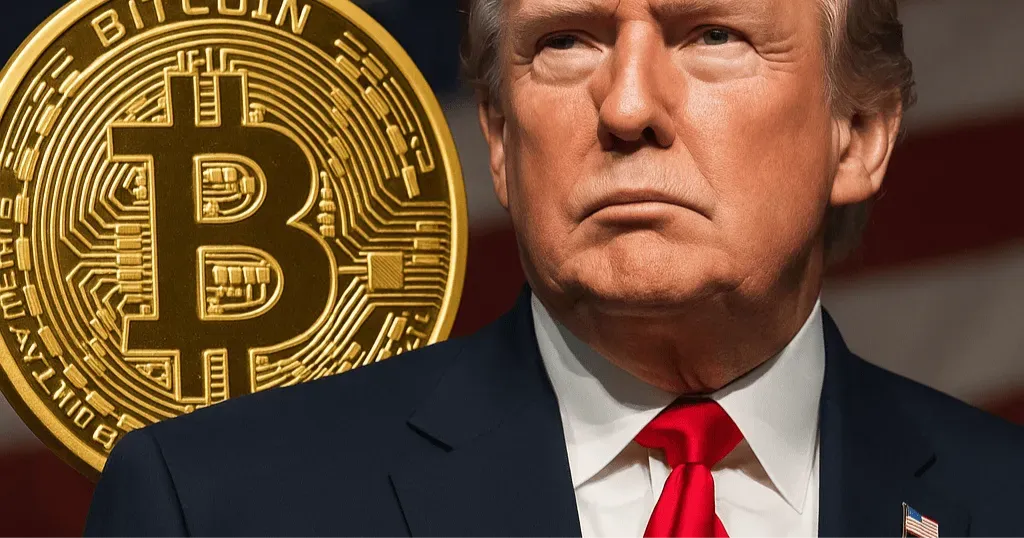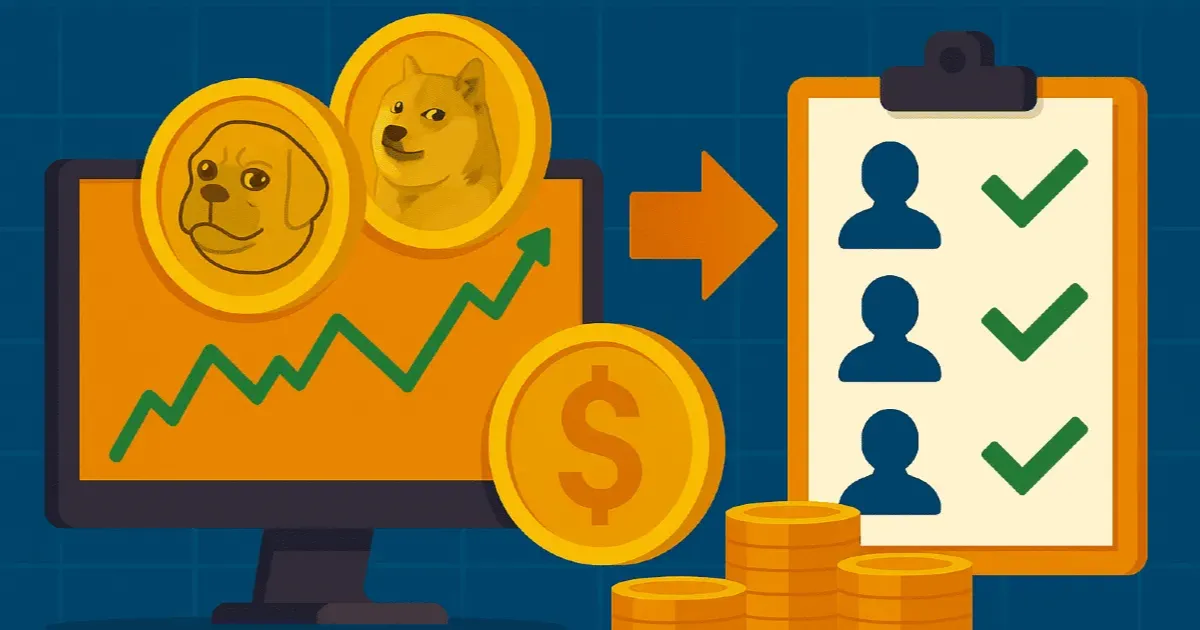Trump’s crypto agenda claims to promote financial freedom, but it quietly reinforces insider privilege and political control, leaving everyday users behind.
Bitcoin’s recent surge has reignited hope across the crypto space. With the global economy inching toward uncertainty and inflation whispering at every corner, digital assets once again feel like a lifeline. And as momentum builds, former President Donald Trump is positioning himself not just as a political contender but as crypto’s loudest cheerleader.
But here’s the uncomfortable truth: this isn’t about financial freedom for the average person. It’s about reshuffling power, not redistributing it. Behind the glowing headlines and populist slogans, Trump’s crypto strategy leans more toward favoritism for the connected few than toward meaningful access for the rest of us.
It’s not just the optics; it’s the outcomes.
Crypto Was Meant to Be a Reset. This Isn’t That.
When Bitcoin was born out of the rubble of the 2008 financial crash, it wasn’t just another asset class. It was a declaration, a pushback against central banks, bailouts, and systems built to protect wealth, not people. Crypto was about transparency, sovereignty, and leveling the financial playing field.
Trump’s version of that story? It feels more like a reboot of old-world cronyism, dressed up in blockchain language.
Yes, he’s taken a public stance supporting crypto. But beneath the surface, there’s a growing web of deregulation, political token launches, and family-affiliated ventures that seem more interested in control than in innovation.
The Power Behind the Curtain: Deregulation as a Business Tool
At the heart of Trump’s crypto push is a bold deregulation agenda. But it’s not the kind of smart policy reform that encourages innovation while protecting consumers. It’s sweeping, blunt, and quietly selective.
One of the most striking examples is the rise of World Liberty Financial (WLF), a digital finance firm tied directly to Trump’s sons. Around the same time that Trump’s administration relaxed oversight and enforcement in the crypto sector, most notably by shutting down the Department of Justice’s national crypto crime unit, WLF launched a suite of products, including its own stablecoin.
The optics aren’t hard to read. Family-linked firms move into the market while oversight bodies quietly exit. It’s a classic play: remove the referees, then let your own team dominate the field.
This isn’t decentralization. It’s substitution—one form of centralized influence being replaced by another.
Coins of Allegiance: The Rise of Politico-Crypto
It doesn’t stop at family ventures. A wave of politically affiliated tokens is flooding the market. These so-called “politico-coins” aren’t designed to solve real-world problems or power new forms of infrastructure. They’re designed to send a message.
And the message is loyalty.
These tokens tie identity to ideology. They’re marketed not as tools, but as symbols of allegiance to a person or party. For everyday investors trying to navigate a volatile market, this creates a confusing and sometimes dangerous mix of hype, tribalism, and financial risk.
It blurs the line between tech and theater.
The Promise vs. the Reality
Trump’s crypto rhetoric talks a big game about freedom, fairness, and innovation. But look past the branding, and the winners look very familiar: those with the right last name, the right friends, and the right access.
The unbanked, who stand to gain the most from crypto, are still waiting for platforms that truly cater to their needs. The undocumented worker who wants to send money home without being gouged by remittance fees? Ignored. The teenager in a hyperinflationary country saving in stablecoins? Not a focus. The small business owner shut out of traditional credit? Still in the dark.
Instead, what’s growing are speculative tokens, insider-backed launches, and deregulated markets that benefit those who already understand how to play the game.
A Hollow Revolution?
Crypto was supposed to be the great equalizer. But when enforcement fades and insiders rise, you’re left with a familiar pattern: wealth concentrating at the top and risk trickling down.
It’s not just that watchdogs were disbanded; it’s that their absence made room for unchecked power plays. The disbanding of the DOJ’s national crypto enforcement team signaled that scrutiny was no longer welcome, just as WLF and similar ventures were expanding aggressively.
And while Trump’s administration paints itself as blockchain-friendly, it’s the kind of friendliness that turns a blind eye to potential conflicts of interest.
What’s happening isn’t an attack on central banks. It’s a quiet rerouting of financial control from old institutions to new elites.
A Market Flooded with Speculation, Not Solutions
In today’s crypto world, speculation often dominates utility. Trump’s version of crypto doesn’t challenge that it accelerates it.
Why build decentralized systems to improve remittances when launching a personality-branded token gets more press? Why invest in grassroots financial inclusion when influencer coins dominate Twitter feeds?
This mindset feeds short-term rallies but does nothing to build long-term resilience. It’s pump-and-dump culture with a political twist.
A Moment for Reflection
All of this raises a hard question: Is crypto still about the people, or is it becoming a playground for the powerful?
Because if we keep heading down this path where the loudest voices in the space are political figures and family-owned funds, then the original mission is lost.
The point was never to make a few people richer. It was to build a more accessible system for everyone.
Real Financial Freedom Isn’t Found in a Token Logo
If we want to fix this, it starts with remembering what real impact looks like.
It’s the family in the Philippines able to send and receive funds in minutes instead of days. It’s the refugee in Lebanon storing wealth in a wallet that no border can confiscate. It’s the artist in Nairobi minting their first NFT and being paid directly for their work.
That’s where the revolution lives—not in press releases, not in political coins, and certainly not in ventures hiding behind deregulation.
The Community Must Lead, Not Follow
Trump’s crypto agenda is a case study in how a powerful voice can shift the conversation, but it’s also a warning.
Crypto isn’t immune to co-option. It’s still young, still growing, and still vulnerable. And when figures like Trump enter the space, the community must ask, are we being used? Or are we still in control of our own future?
The challenge isn’t just regulatory. It’s ethical. If we allow the blockchain to become just another tool for influence and exclusion, we’ve lost what made it matter.
Where We Go From Here
There’s still time to course correct. There are still builders focused on inclusion, still developers solving real problems, and still activists using crypto to fund truth-telling and community action.
But they need more space in the spotlight.
And most importantly, we as a community need to stop mistaking loudness for leadership. Trump’s crypto play may drive attention, but attention isn’t the same as impact. Especially not when it leaves so many behind.
About the Author
Dan






